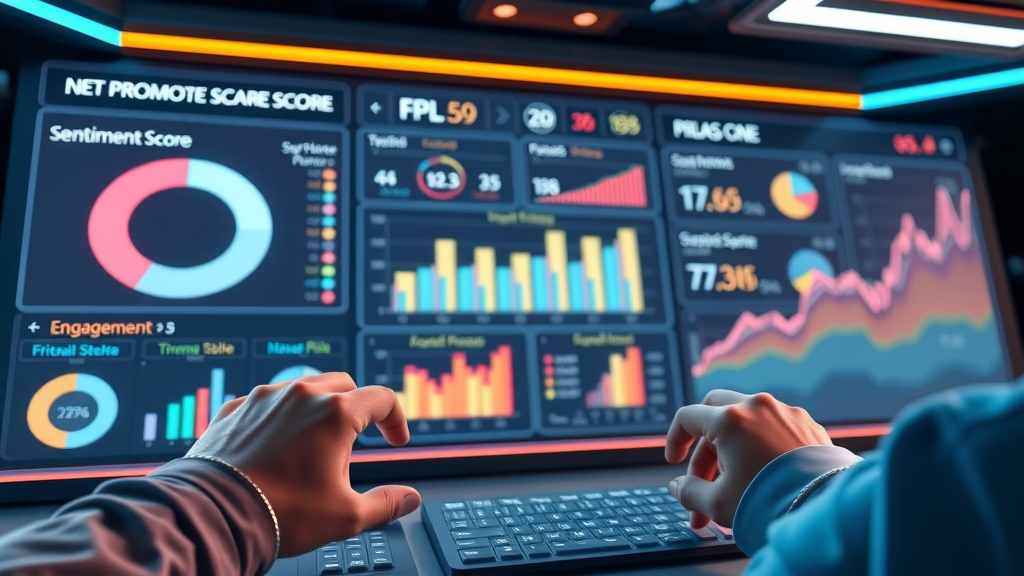Did you know that 87% of consumers read online reviews before choosing a brand? In an era where brand reputation is built—and broken—in real time, understanding what your audience truly thinks is no longer optional. Reputation analysis bridges the gap between perception and performance, offering actionable insights that can elevate your brand from ordinary to unforgettable. Whether you’re a global powerhouse or a rising star, mastering reputation analysis ensures you stay ahead of every comment, tweet, and headline. Dive in as we reveal how to harness feedback, metrics, and social sentiment to build a positively unshakable reputation.

Understanding Reputation Analysis: Why It Matters for Every Brand
- Discover what motivates public perception and how reputation analysis unveils critical insights for brand reputation management.
In today’s hyper-connected world, a single negative review can domino into a public relations crisis, while positive reviews can catapult a brand to viral fame. Reputation analysis is the systematic approach to tracking, interpreting, and acting on what’s being said about your brand reputation across the digital landscape. From scouring review sites and monitoring social media chatter to investigating news coverage, reputation analysis gives brands a deeper understanding of audience sentiment, strengths and weaknesses, and where brand promise meets customer expectation.
Every business, regardless of size, needs to know how it’s perceived. Not only does reputation analysis help identify and resolve customer complaints promptly, but it also arms leaders with the valuable insights required to stay relevant, trustworthy, and competitive. Ultimately, what people think of your brand guides purchasing decisions, shapes loyalty, and heavily influences long-term business success.
Ignoring your online presence and public perception can lead to missed opportunities, eroded trust, and stalled growth. By embracing ongoing reputation analysis, you’ll equip your organization with the clarity to guide strategy, foster customer loyalty, and confidently navigate the unfiltered world of online conversations.
What You'll Gain from Mastering Reputation Analysis
- Define reputation analysis and its key methods
- Explore the interplay of brand reputation and audience trust
- Implement social media and online monitoring effectively
- Leverage sentiment analysis and customer feedback
- Master essential tools and KPIs for tracking reputation
- Apply actionable reputation management strategies
Mastering reputation analysis empowers you to pinpoint what’s working, spot when issues arise, and proactively enhance your brand reputation . You’ll discover how to tap into the lifeblood of consumer trust— customer feedback —as well as quantify your progress through clear KPIs and advanced media monitoring . With tangible skills in place, you can transform those valuable insights into a roadmap for building and protecting a positive reputation, regardless of shifting public sentiment or changing digital trends.
This comprehensive guide covers everything from defining reputation analysis to implementing sentiment and social media monitoring —ensuring you understand not just what’s being said, but why it matters. Along the way, you’ll learn to distinguish between reputation analysis and reputation management, measure online engagement, and evaluate your success with real, actionable data.

A Startling Statistic: The Hard Evidence Behind Reputation Analysis
A staggering 87% of consumers read online reviews for local businesses in 2023, making reputation analysis a non-negotiable priority for any brand.
This number isn’t just impressive—it’s transformative. With such a high percentage of the population relying on customer reviews to inform their decisions, your ability to manage and analyze public sentiment will ultimately determine whether you build a loyal following or struggle to recover from negative perceptions. Effective reputation analysis is the linchpin of brand reputation management in today’s transparent, always-on digital ecosystem.
What Is Reputation Analysis?
Defining Reputation Analysis Across Digital Platforms
At its core, reputation analysis is the process of systematically collecting, categorizing, and evaluating information about your brand from online sources. This includes tracking brand mentions across social media networks, review sites , news outlets, blogs, and forums, as well as assessing feedback from customers. By leveraging specialized tools and methodologies such as sentiment analysis , reputation analysis gives organizations an all-encompassing view of how they are perceived in the digital space.
Reputation analysis is not a snapshot in time; rather, it is a continuous process that monitors online conversations, detects shifts in public sentiment, and identifies trends that could affect your brand reputation . This provides business leaders with the actionable insights needed to address weaknesses, amplify strengths, and preempt potential crises before they escalate.
Robust reputation analysis doesn’t just benefit global companies—it’s equally vital for small businesses, non-profits, and individuals aiming to establish a resilient online presence. By understanding how each digital platform contributes to your overall image, you equip your brand to thrive in an era where information spreads at the speed of a tweet.
The Connection Between Reputation Analysis and Brand Reputation
It’s impossible to manage what you cannot measure. Reputation analysis underpins brand reputation management by providing the data and context needed to understand customer perception. By identifying recurring themes in customer feedback , analyzing patterns in brand mentions , and monitoring media coverage , businesses can gauge whether public perception aligns with their intended brand promise .
When executed diligently, reputation analysis uncovers the root causes behind positive and negative sentiment, helping brands address customer complaints, reinforce strengths, and bridge the gap between messaging and reality. As audience trust becomes increasingly fragile, embracing real-time analysis is key to maintaining a competitive edge and fostering lasting customer relationships.
Ultimately, your brand reputation is shaped not only by your actions but also by the public’s response to them. Reputation analysis transforms anecdotal evidence into quantitative data, offering leaders the confidence to adjust strategy, improve customer service , and ensure the long-term health of their brand.
Why Reputation Analysis Is Essential for Brand Reputation Management
Reputation Analysis vs. Reputation Management: Distinctions and Overlaps
While the terms are often used interchangeably, reputation analysis and reputation management serve distinct, complementary purposes. Reputation analysis focuses on the discovery, measurement, and interpretation of public sentiment and brand mentions . Reputation management, on the other hand, encompasses the actions and strategies a brand undertakes to influence, improve, or maintain its reputation based on those findings.
Think of reputation analysis as diagnosing the current health of your brand, while reputation management is the treatment plan. Effective reputation management is rooted in the insights provided by rigorous analysis—whether through responding to negative reviews, amplifying positive customer stories, or refining internal processes to align with audience values.
Utilizing both together ensures that not only are you listening to your target audience , but you are also equipped to respond and adapt in ways that reinforce trust, engagement, and consistent delivery on your brand promise .
Understanding Online Reputation Through Media Monitoring
Media monitoring captures a wide array of sources—news reports, blogs, podcasts, review platforms, and even industry newsletters—that collectively shape your online reputation. Unlike direct customer feedback, media mentions often offer third-party perspectives, benchmarks, and trends influencing both public perception and stakeholder sentiment.
By tracking and analyzing patterns in media coverage , brands can measure the reach and effectiveness of PR campaigns, spot emerging reputation risks, and stay informed about competitor activities. This intelligence not only safeguards brand integrity but also enhances credibility and thought leadership.
When combined with social media monitoring and customer analytics, media monitoring ensures your reputation analysis leaves no stone unturned, providing a holistic view of your real-time digital footprint.
The Core Elements of Effective Reputation Analysis
- Social Listening
- Sentiment Analysis
- Media Monitoring
- Brand Mentions
- Customer Feedback
- Brand Promise Integrity
Each core element plays a critical role in robust reputation analysis. Social listening allows brands to tap into unfiltered discussions on emerging trends and consumer sentiment. Sentiment analysis automates the task of parsing positive, negative, and neutral reactions, giving brands clarity on shifting perceptions at scale. Media monitoring ensures you catch every headline and mention, both good and bad, for complete situational awareness.
Tracking brand mentions provides insight into visibility and reach, while actively soliciting customer feedback —both direct and unsolicited—keeps you grounded in real-world experiences. Finally, maintaining brand promise integrity by regularly comparing audience expectations to your company’s actual performance forges lasting trust and customer loyalty.
By weaving these elements together and leveraging the right mix of manual and automated tools, organizations can build a reputation analysis system that is comprehensive, actionable, and responsive to the ever-changing dynamics of online reputation.
| Tool | Key Feature | Best For | Integration |
|---|---|---|---|
| Tool A | Sentiment Analysis | Social Media | APIs |
| Tool B | Media Monitoring | Multichannel | Extensive |
| Tool C | Customer Feedback | E-commerce | Moderate |
Step-By-Step: Conducting Reputation Analysis for Your Brand
Step 1: Collecting Brand Mentions Across Social Media and Web
The foundation of reputation analysis is proactively collecting every instance where your brand is mentioned. This means developing systems to capture conversations on social media , review sites , forums, blogs, and online news outlets. Advanced search queries, social listening platforms, and Google Alerts are invaluable for aggregating this diverse data into a centralized dashboard.
Tracking these brand mentions provides a clear snapshot of your overall brand visibility and highlights the loudest voices in your digital ecosystem. By categorizing mentions by source, topic, and sentiment, you’ll identify which channels drive the most conversation and which topics require immediate response or strategic focus.
Comprehensive mention collection ensures your analysis is thorough, avoiding gaps that can lead to blind spots or missed opportunities. Consistency in this process arms you with the data necessary to navigate the unpredictable world of online reputation.
Step 2: Implementing Sentiment Analysis Methods
Once adequate data is collected, sentiment analysis is employed to gauge the tone—positive, negative, or neutral—of each brand mention. Tools like natural language processing algorithms can rapidly evaluate thousands of posts, reviews, and comments, giving you instant insight into shifts in customer sentiment.
Sentiment analysis enables detailed segmentation, such as identifying recurring complaints, positive customer service experiences, or trending topics. By visualizing this data in graphs or dashboards, you can track the impact of marketing campaigns, product launches, or crisis responses in real time.
When complemented by manual checks, sentiment analysis unlocks precision and context that automated solutions sometimes miss, ensuring your reputation analysis is both profound and actionable.

Step 3: Integrating Media Monitoring and Social Media Monitoring
While social media channels are vital, your online reputation is also shaped by news articles, press releases, industry publications, and third-party blog posts. Media monitoring helps brands keep tabs on what’s being said beyond owned channels, catching news coverage, feature stories, or problematic mentions before they become viral.
When combined with social media monitoring , brands can compare sentiment across platforms, track the ripple effect of stories, and identify which channels require immediate attention or clarification.
This dual tracking approach ensures that reputation analysis delivers a 360° view, highlighting both opportunities and vulnerabilities so that proactive reputation management strategies can be developed in response.
Step 4: Gathering and Analyzing Customer Feedback for Reputation Insights
Direct customer feedback —via post-purchase surveys, feedback forms, direct emails, or online reviews—offers an unfiltered look at how your brand is delivering against expectations. Soliciting feedback from customers closes the loop, turning passive observations into actionable improvements.
Analyzing feedback not only surfaces trends—whether related to product quality, customer service, or usability—but also identifies shifts in customer perception and satisfaction. By addressing these insights quickly, brands demonstrate attentiveness and a genuine commitment to continuous improvement.
Layering this consumer intelligence on top of your broader reputation analysis reveals the gaps between your brand promise and the real customer experience, ensuring sustained alignment with your core values.
Step 5: Evaluating Brand Promise Alignment with Audience Perceptions
The final step is to assess whether your audience’s perception aligns with your stated brand promise . Use insights from sentiment analysis, media monitoring, and direct feedback to evaluate how consistently your brand delivers on its commitments.
Any disconnect between stated values and public perception highlights opportunities for improvement, whether in messaging, operations, or customer engagement. Brands that close this gap can expect stronger loyalty, greater advocacy, and a reputation that stands the test of time.
Regular alignment assessment transforms your reputation analysis from a reactive reporting function into a proactive engine of brand growth and customer trust.
Video: Demonstration: Using Reputation Analysis Tools to Monitor Brand Reputation in Real-Time
People Also Ask: What are the 7 dimensions of reputation?
The Seven Dimensions of Reputation Analysis
Reputation analysis evaluates brands across seven core dimensions: products/services , innovation , workplace , governance , citizenship , leadership , and performance . Each of these elements plays a critical role in shaping public perception and building robust brand reputation.
For example, innovative brands are often perceived as market leaders, while strong governance and performance reassure stakeholders that the company is ethical and competent. Highly rated products or responsive customer service directly boost loyalty and word-of-mouth advocacy, underscoring the importance of a multi-faceted reputation analysis approach.
By addressing all seven dimensions, brands ensure that their reputation management efforts are comprehensive, credible, and sustainable over time.
People Also Ask: How do you evaluate reputation?
Evaluating Reputation: Key Strategies for Success
The most effective ways to evaluate reputation include conducting detailed sentiment analysis , gathering and analyzing customer feedback , tracking brand mentions across channels, and performing ongoing media monitoring . These pillars ensure that reputation analysis is data-driven and grounded in both qualitative and quantitative measures.
Regular tracking enables brands to benchmark their progress over time, identify emerging risks or strengths, and adapt strategies swiftly to safeguard their online reputation .
People Also Ask: What is KPI for reputation?
Essential KPIs for Reputation Analysis
Key performance indicators (KPIs) for reputation analysis include Net Promoter Score (NPS) , sentiment scores from online feedback, share of voice on digital channels, and engagement rates on social media. These metrics provide a quantifiable benchmark to evaluate improvements or declines in brand reputation .
Effective use of KPIs enables organizations to allocate resources efficiently, monitor campaign impact, and demonstrate the ROI of their reputation management initiatives.

People Also Ask: What are the 3 elements of measuring online reputation?
The Three Pillars of Measuring Online Reputation
The most critical elements of measuring online reputation are: monitoring brand mentions across digital platforms, conducting regular sentiment analysis to assess public mood, and evaluating direct customer feedback for actionable intelligence. These foundational practices equip brands to track their online reputation with precision and agility.
Without these three pillars, businesses risk reacting too slowly to negative reviews or failing to capitalize on positive reputation momentum.
Case Study: Taylor Swift and the Power of Reputation Analysis
How Taylor Swift Utilizes Reputation Analysis for Personal Brand Reputation Management
Taylor Swift’s strategic use of social media and reputation analysis has redefined how celebrities manage their brand reputation in the digital age.
As one of the world’s most influential celebrities, Taylor Swift has mastered the art of reputation analysis to maintain and transform her personal brand. By actively monitoring social media trends, analyzing feedback from fans, and responding to emerging conversations, she tailors her image to audience expectations while swiftly addressing controversy or criticism.
Taylor Swift’s team leverages sentiment analysis and media monitoring to measure the pulse of both supportive and critical commentary. This real-time intelligence enables her to strategically time album releases, activism campaigns, and high-impact statements for maximum positive effect.
Her approach showcases how effective reputation analysis not only manages public perception, but also transforms it into a source of ongoing audience engagement, loyalty, and brand expansion.

Best Practices for Reputation Analysis in Brand Reputation
- Invest in reliable media monitoring and audience insight tools
- Respond promptly to feedback and social media trends
- Regularly assess sentiment and adapt reputation management strategies
- Maintain authenticity and reinforce the brand promise
For a winning approach to reputation analysis, make it a practice to deploy trusted analytics platforms and embrace both human and automated monitoring. Early detection and response to feedback—whether from social media users, review sites, or direct customer complaints—can dramatically improve your brand reputation trajectories.
Regularly reassessing sentiment and ensuring your brand promise remains credible fosters trust and authentic connections with your target audience.
Above all, keep the process transparent and use insights to continuously sharpen your strategies for reputation management.
Common Reputation Analysis Challenges and How to Overcome Them
- Data overload and filtering relevant insights
- Identifying genuine customer feedback
- Maintaining brand promise across complex social landscapes
- Rapidly evolving reputation management trends
With the volume of data generated every day, brands often struggle to prioritize actionable insights over noise. Effective reputation analysis requires diligent filtering, leveraging AI and manual reviews to focus only on feedback that genuinely reflects the customer experience.
Distinguishing between authentic and spammy feedback, maintaining a consistent brand promise across disparate platforms, and staying abreast of the latest reputation management innovations are all ongoing challenges. Successful brands overcome these hurdles by building agile, transparent feedback loops and staying proactive rather than reactive.
Adapting swiftly and using evolving tools ensures you transform challenges into opportunities for strengthening your online reputation.
FAQs about Reputation Analysis and Brand Reputation
- How frequently should I conduct reputation analysis for my brand? Reputation analysis should be an ongoing, continuous process. Weekly reviews are recommended for most brands, with daily monitoring during key campaigns, launches, or reputation events. Automated tools can help ensure nothing is missed in real time.
- What are the best social listening tools? The best tools will depend on your needs, but industry leaders like Brandwatch, Sprout Social, Mention, and Hootsuite offer robust social listening, sentiment analysis, and reporting functions for brands of all sizes.
- Is sentiment analysis accurate for all industries? While sentiment analysis is generally effective, accuracy may vary depending on industry jargon, language complexity, and the nuance of individual comments. Best results come from combining automated tools with occasional manual review.
- What role does media monitoring play in online reputation? Media monitoring expands reputation analysis beyond social media and review sites to include third-party articles, news broadcasts, press releases, and more. This broader lens ensures your brand reputation is fully informed and protected from all angles.
Future Trends: The Evolving Scope of Reputation Analysis
- AI and automation in reputation management
- Expansion of real-time sentiment analysis
- Enhanced integration with brand reputation strategies
The next generation of reputation analysis will leverage artificial intelligence to parse millions of data points rapidly, offering even more granular and actionable insights. Real-time analytics are set to redefine proactive reputation management , enabling brands to identify and capitalize on sentiment shifts instantly.
Enhanced integration with broader business and marketing strategies will ensure reputation management becomes a core driver of success, empowering brands to foster advocacy, innovation, and trust in an increasingly unpredictable digital world.
The brands that succeed tomorrow will be those already investing in robust, forward-thinking reputation analysis today.
Ready to Elevate Your Brand? Harness the Power of Reputation Analysis Today
Take action now to safeguard your brand reputation . Leverage the insights from reputation analysis, deliver on your brand promise, and watch as customer loyalty and trust reach new heights.
Conclusion: Embed reputation analysis into your daily operations, respond authentically, and turn feedback into growth. The strongest brands are those who listen, analyze, adapt, and deliver.
 Add Row
Add Row  Add
Add 





Write A Comment